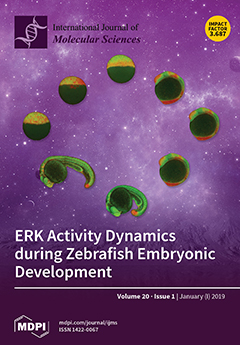The pine wood nematode (PWN),
Bursaphelenchus xylophilus, is the pathogen of pine wilt disease (PWD), resulting in huge losses in pine forests. However, its pathogenic mechanism remains unclear. The cathepsin L-like cysteine proteinase (CPL) genes are multifunctional genes related to the parasitic
[...] Read more.
The pine wood nematode (PWN),
Bursaphelenchus xylophilus, is the pathogen of pine wilt disease (PWD), resulting in huge losses in pine forests. However, its pathogenic mechanism remains unclear. The cathepsin L-like cysteine proteinase (CPL) genes are multifunctional genes related to the parasitic abilities of plant-parasitic nematodes, but their functions in PWN remain unclear. We cloned three
cpl genes of PWN (
Bx-cpls) by rapid amplification of cDNA ends (RACE) and analyzed their characteristics using bioinformatic methods. The tissue specificity of
cpl gene of PWN (
Bx-cpl) was studied using in situ mRNA hybridization (ISH). The functions of
Bx-cpls in development and pathogenicity were investigated using real-time quantitative PCR (qPCR) and RNA interference (RNAi). The results showed that the full-length cDNAs of
Bx-cpl-1,
Bx-cpl-2, and
Bx-cpl-3 were 1163 bp, 1305 bp, and 1302 bp, respectively.
Bx-cpls could accumulate specifically in the egg, intestine, and genital system of PWN. During different developmental stages of PWN, the expression of
Bx-cpls in the egg stage was highest. After infection, the expression levels of
Bx-cpls increased and reached their highest at the initial stage of PWD, then declined gradually. The silencing of
Bx-cpl could reduce the feeding, reproduction, and pathogenicity of PWN. These results revealed that
Bx-cpls play multiple roles in the development and pathogenic processes of PWN.
Full article






